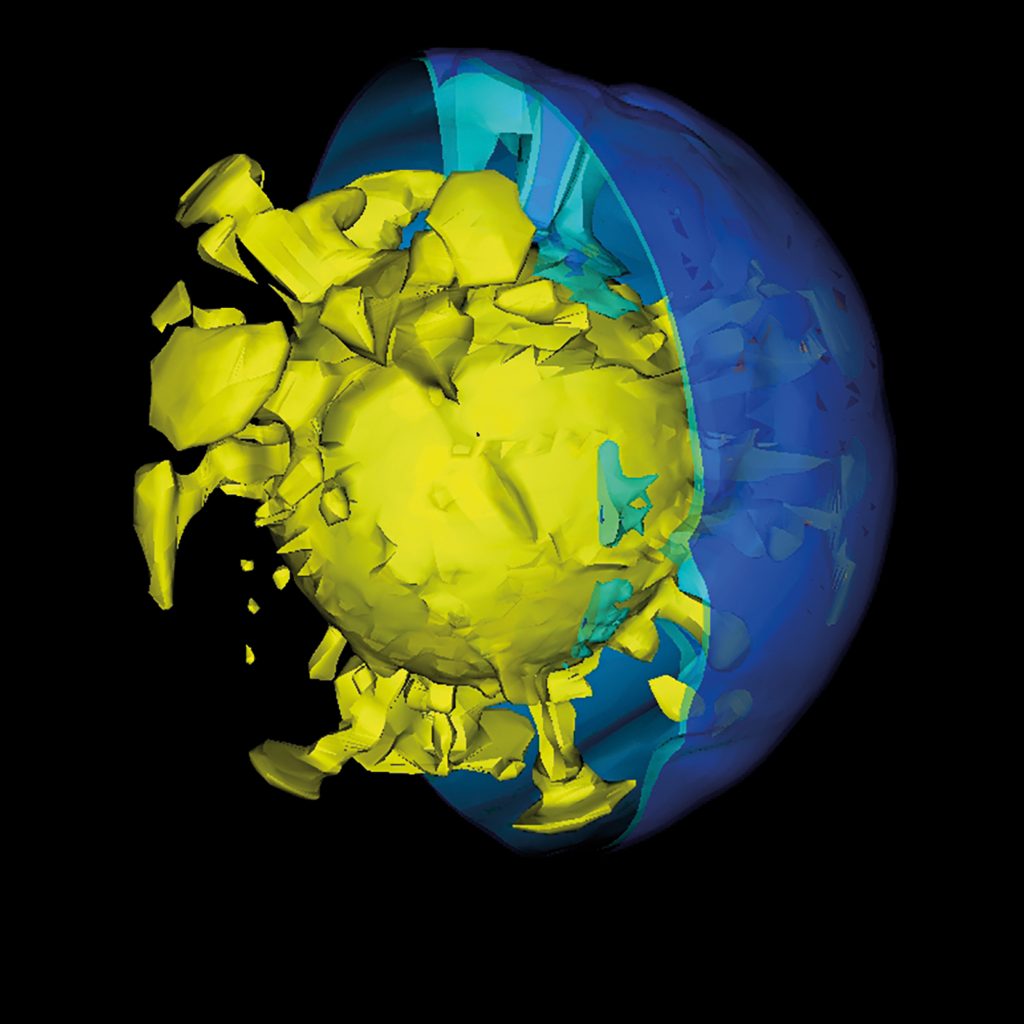Insight into the flow of matter inside Earth
Earth’s interior resembles the layers of an onion. But what exactly occurs there? Until now, theoretical physics has been unable to provide conclusive answers to this question. Anyone seeking to research this kind of flow in a terrestrial laboratory setting will encounter a problem – gravity. Gravitation acts from Earth’s core on the ‘real’ surface, and its magnitude decreases towards Earth’s crust. In this way, the radial force feld ensures a characteristic distribution of temperature in Earth’s mantle and outer core. In order to solve the mystery of flow and temperature conditions inside Earth by experimental means, this radial force feld needs to be created artifcially in a piece of apparatus (‘miniature Earth’) on the ISS, where Earth’s gravity and centrifugal force are in balance.
It was precisely this idea that gave birth to the shoebox-sized apparatus called ‘Geophysical Flow Simulation’, or GeoFlow for short. A viscous dielectric oil layer is located between an inner, solid sphere and a hollow outer sphere. The inner sphere is heated to match the temperature conditions inside Earth, while the outer sphere is cooled. A high voltage is then applied to the gap between the spheres to create an undistorted, centrally-symmetric force feld that simulates the gravity on Earth. A camera above the miniature Earth records the flow patterns that occur during an experiment run. Scientists compare the striped patterns (interferograms) with model simulations and use the fndings to infer the temperature distribution and flow conditions within the fluid.
After GeoFlow I (2008–2009) and GeoFlow II (2011–2018), the follow-up experiment AtmoFlow, which will start in 2022, will be used to analyse complex flow patterns in Earth’s atmosphere, to acquire, for example, a greater understanding of the climate impact of global warming and the resulting changes on Earth.
German Aerospace Center (DLR)
Thomas Driebe · E-Mail: thomas.driebe@dlr.de · DLR.de/en
